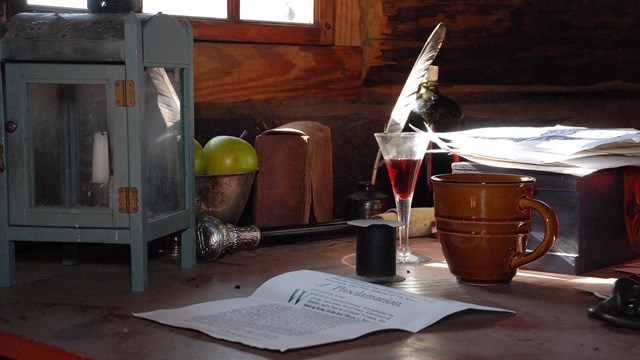|
For thousands of years the ancient trail that connects the Mohawk River and Wood Creek served as a vital link for people traveling between the Atlantic Ocean and Lake Ontario. Travelers used this well-worn route through Oneida Indian territory to carry trade goods and news, as well as diseases, to others far away. When Europeans arrived they called this trail the Oneida Carrying Place and inaugurated a significant period in American history--a period when nations fought for control of not only the Oneida Carrying Place, but the Mohawk Valley, the homelands of the Six Nations Confederacy, and the rich resources of North America as well. In this struggle Fort Stanwix would play a vital role. 
People
Learn more about the people who played a role in the history of the Oneida Carry and Fort Stanwix/Schuyler. 
Places
What is the Oneida Carry? What was Fort Schuyler? Where is the Mohawk Valley? Find the answer to these questions, and more. 
Be a Citizen Archivist!
Make a permanent contribution to the historical record by helping to transcribe these pension files. 
Daily Life Series
What was a typical day at the historic fort like? Watch the following films to find out! 
Collections
The museum collections at Fort Stanwix National Monument consist of approximately 500,000 objects. 
Native American History
Many Native Americans lived and died in the vicinity of the Oneida Carry. Discover the stories of the tribes and families of the area. 
Stories
Discover the rich history of Fort Stanwix National Monument, from it's time as a military outpost to it's inception as a park. 
The American Revolutionary Episodic
A blog for those wanting to learn more about the 18th C, interesting incidents of the American Revolution, and those who lived through both. 
The Anatomy of a Fort Series
Just how was the fort built and what are those pointy things for? 
Research
Fort Stanwix National Monument has a number of research questions that remain unexplored as well as many that are being uncovered. 
Preservation
The NPS preserves cultural resources by conducting archeological investigations, conserving museum objects, and instilling appreciation. |
Last updated: May 2, 2024
